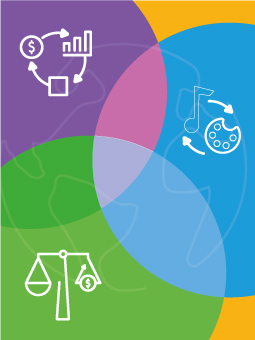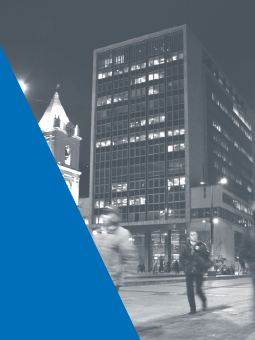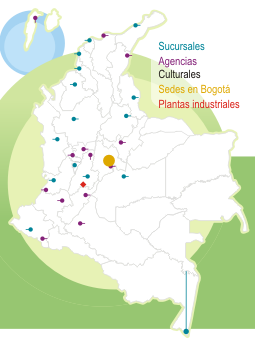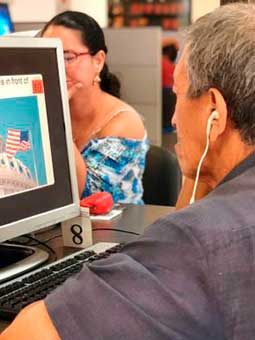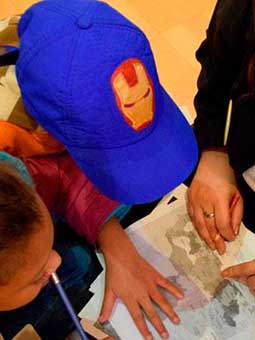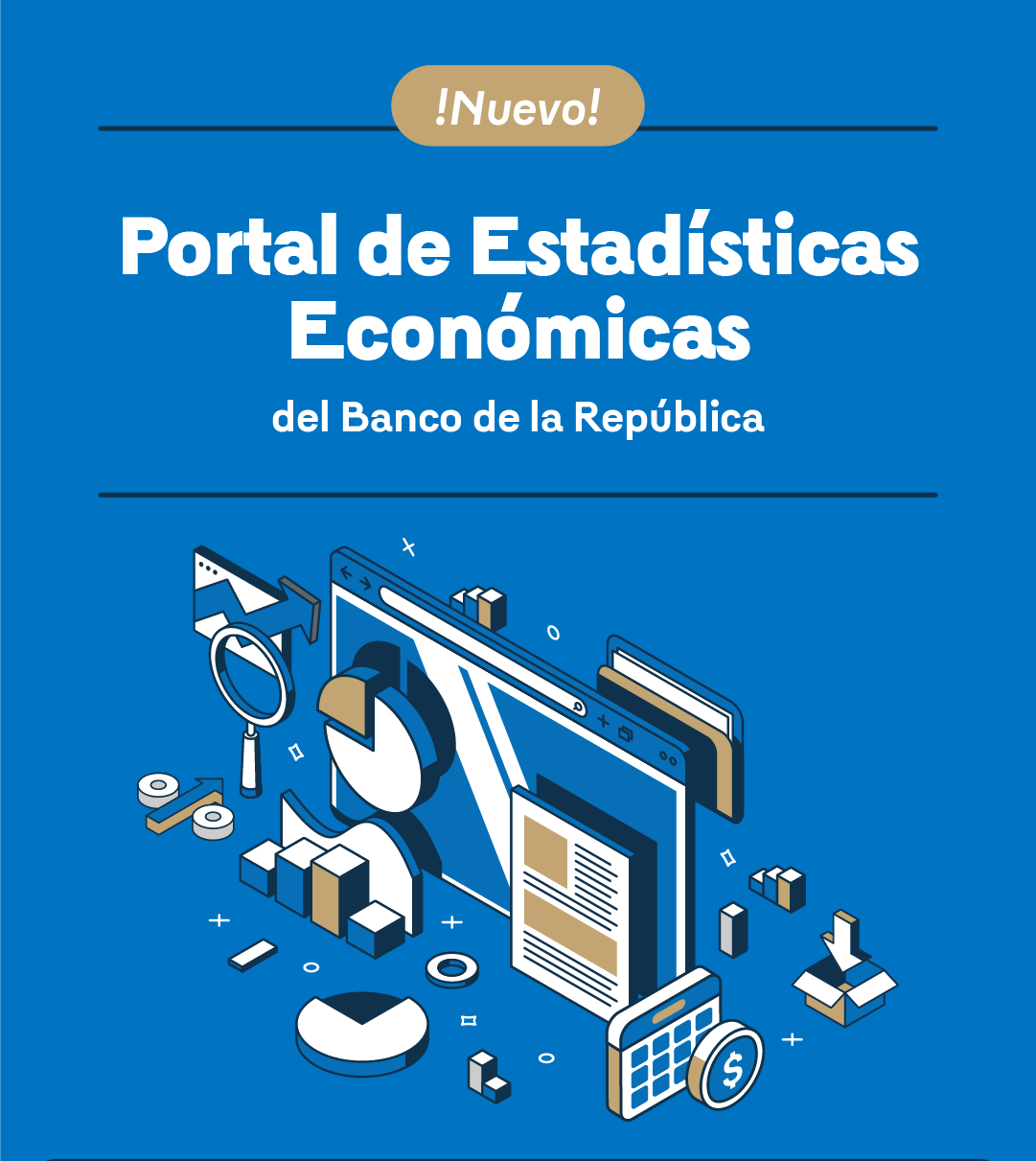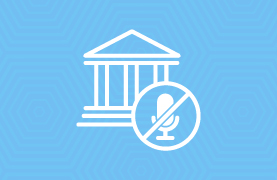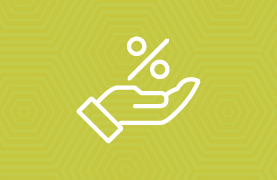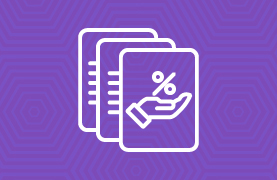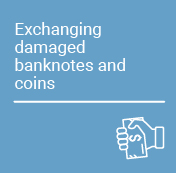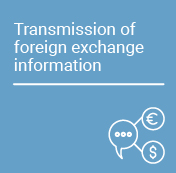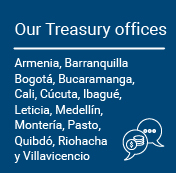Diagnosis and Assessment of Information
Banco de la República (the Central Bank of Colombia) permanently does a proactive exercise to anticipate the possible consequences of regulation and the needs arising from the national and international context. To this end, the Bank carries out continuous analyses to identify, diagnose, and prioritize problems related to its management. In its diagnostic activities, the Bank recognizes the importance of citizen and stakeholder participation and their contributions to achieve specific, accessible, and realistic objectives that strengthen the Bank’s management.
Public Service
Citizen Service System (only in Spanish), including corporate mailboxes to handle procedures and provide services.
Social Networks
Communication spaces with the public to disseminate institutional messages using social networks and virtual channels:
- https://www.facebook.com/BancoRepublica
- https://www.facebook.com/Banrepcultural/
- https://www.facebook.com/banrepculturalarmenia/
- https://www.facebook.com/BanrepculturalBarranquilla/
- https://www.facebook.com/BanrepculturalBucaramanga/
- https://www.facebook.com/BanrepculturalBuenaventura/
- https://www.facebook.com/BanrepculturalCali/
- https://www.facebook.com/BanpepculturalCucuta/
- https://www.facebook.com/BanrepculturalFlorencia/
- https://www.facebook.com/BanrepculturalGirardot/
- https://www.facebook.com/BanrepculturalHonda/
- https://www.facebook.com/BanrepculturalIbague/
- https://www.facebook.com/BanrepculturalIpiales/
- https://www.facebook.com/BanrepculturalLeticia/
- https://www.facebook.com/BanrepculturalManizales/
- https://www.facebook.com/BanrepculturalMedellin/
- https://www.facebook.com/BanrepculturalMonteria/
- https://www.facebook.com/BanrepculturalNeiva/
- https://www.facebook.com/BanrepculturalPasto/
- https://www.facebook.com/BanrepculturalPereira
- https://www.facebook.com/BanrepculturalPopaya/
- https://www.facebook.com/banrepculturalquibdo/
- https://www.facebook.com/BanrepculturalRiohacha/
- https://www.facebook.com/BanrepculturalSanAndres/
- https://www.facebook.com/BanrepculturalSantaMarta/
- https://www.facebook.com/BanrepculturalSincelejo/
- https://www.facebook.com/BanrepculturalTunja/
- https://www.facebook.com/BanrepculturalValledupar/
- https://www.facebook.com/BanrepculturalVillavicencio/
- https://www.facebook.com/BibliotecaBartolomeCalvo/
- https://www.facebook.com/BibliotecaLuisAngelArango/
- https://www.facebook.com/MuseoEtnograficoEnLeticia
- https://www.facebook.com/MuseoDelOroBogota/
- https://www.facebook.com/MuseoDelOroBanRep/
- https://www.facebook.com/MuseoDelOroCalima/
- https://www.facebook.com/MuseoDelOroNarino/
- https://www.facebook.com/MuseoDelOroQuimbaya/
- https://www.facebook.com/MuseoDelOroTaironaBR/
- https://www.facebook.com/MuseoDelOroZenu/
- https://www.facebook.com/museosbanrep
- https://www.facebook.com/pensionadosbanrep/
- https://www.facebook.com/SaladeConciertosLuisAngelArango/
X
- https://www.instagram.com/bancorepublicacolombia/
- https://www.instagram.com/banrepcultural/
- https://www.instagram.com/museodeloro/
- https://www.instagram.com/museosbanrep/
- https://www.instagram.com/BibliotecaLuisAngelArango/
TikTok
Youtube
Flickr
Threads
Surveys
- The Communication and Economic Education Department, through a third party, annually conducts a survey to the general public over 18 years of age whose purpose is to assess the image, positioning, and knowledge of the functions of Banco de la República (Banrep), as well as the implications of monetary policy decisions on citizens' expectations. The results of this survey allow Banrep to internally define the communication strategy and the planning of programs and projects. It should be noted that both the results of the annual survey and the strategies generated from the analysis of the results are internal working documents and are not made public.
- In turn, through third parties, the same department performs a monthly monitoring and analysis of the impact on digital media (social networks, blogs, and dotcom). This information allows the Institution to detect which issues are relevant to citizens.
- Both the Media Outreach Section of the Office for Cultural Affairs and the Communication and Economic Education Department carry out daily monitoring of traditional media through a specialized company to identify news and updates, events, services, and products related to the institution.
- In addition, the Corporate Portal (www.banrep.gov.co) has two anonymous satisfaction surveys available. The first one is active in almost all the contents published. It seeks to learn about the users’ perception regarding the usefulness of the information available (for example, who are the members of the Board of Directors and how are they elected?). The second one is a segmented survey that seeks to characterize users of economic statistics and identify opportunities for improvement in this specific service (for example, Real Value Unit (UVR in Spanish)).
- Since 2016, the Office for Cultural Affairs has periodically conducted a satisfaction and characterization survey of digital audiences. It helps to know who the users of the virtual channels of cultural activity are, what information interests do they have, and what they think about the services and information offered through digital channels. The survey is distributed throughout the digital channels of the Office: Cultural Activity Portal, mass mailings of people registered in the list of the Cultural Network of Banco de la República, and in the cultural activity profiles in social networks. Likewise, respondents are invited to answer the survey through the free press and media advertising. Both the results of the survey and the strategies generated from the analysis of the results are internal working documents and are not made public.
- In addition, Banco de la República carries out periodic surveys to different economic agents to obtain their perception on various aspects. In some cases, the results are published periodically in reports:
- Encuesta mensual de expectativas de analistas económicos (EME in Spanish, Monthly Survey of Analysts' Economic Expectations)
- Encuesta mensual de expectativas económicas de empresarios (EMEE in Spanish, Monthly Survey of Economic Expectations of Entrepreneurs)
- Encuesta trimestral de expectativas económicas (ETE in Spanish, Quarterly Survey of Economic Expectations)
- Encuesta de Tráfico Fronterizo (ETF in Spanish, Border Traffic Survey)
- Reporte trimestral de la Situación del Crédito en Colombia (Quarterly Report on the Credit Situation in Colombia)
- Evolución reciente del endeudamiento externo de los bancos colombianos Survey (Recent Evolution of External Indebtedness of Colombian Banks)
- Percepción sobre riesgos del sistema financiero Survey (Perception of Risks in the Financial System)
- Finally, the Office for Cultural Affairs makes a periodic analysis of ticket admissions to the cultural spaces that so require it as well as of the audiences that sign-up for guided tours, guided workshops, and lending of traveling bags and learning bags, which makes it possible to characterize users and thus identify needs and apply best practices.






